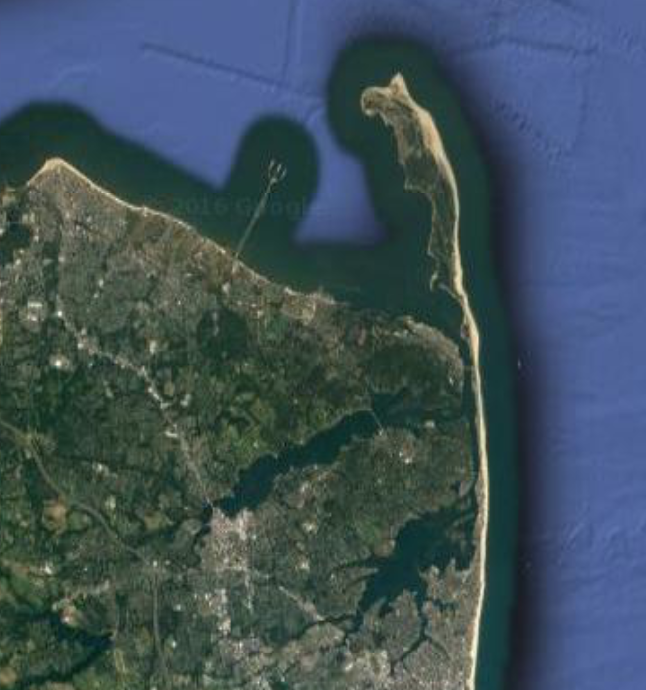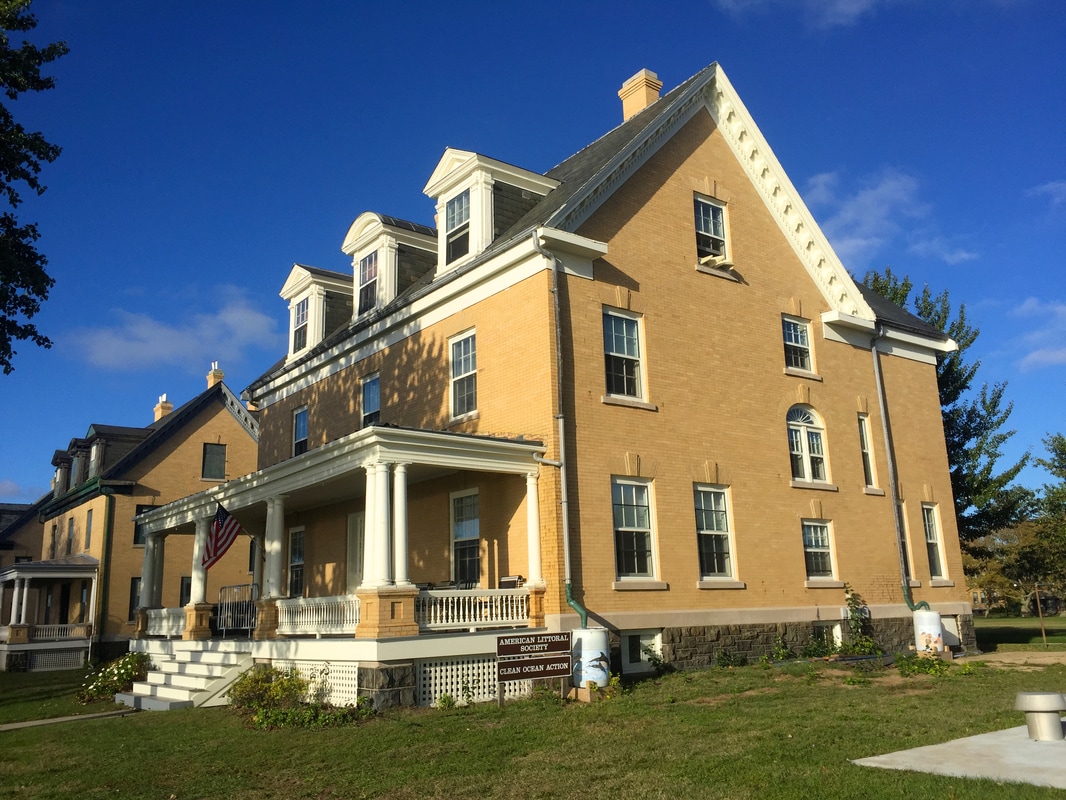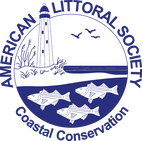|
In 1985 the Society's operations moved into one of the old officer's homes facing Sandy Hook Bay, NJ in what used to be an army fort and is now part of the National Park Service's Gateway National Recreation Area.
The building is open to the public during business hours, Monday through Friday 9 am-5 pm, except on major federal holidays. From Building 18 the Sandy Hook office oversees all Society operations, manages local restoration and conservation programs, including the Fish tagging program, and also runs local events, including winter seal walks, spring and fall bird walks, sunset seining events, surf fishing clinics, BioBlitzes and the annual Members Day and Annual Meeting. The Sandy Hook office also manages the Healthy Rivers and Bays program to clean up local rivers, including the Shrewsbury and Navesink Rivers which have suffered a recent decline in water quality. |
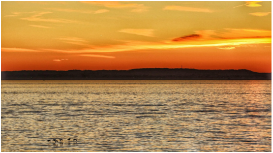
Healthy Rivers and Bays
Recently the New Jersey Department of Environmental Protection downgraded the water quality of the Navesink River. The Society joined a coalition of local organizations to help correct this problem and is bringing programs from its other offices to the Two River area to help counter this problem, including educational programs for the local schools, outreach materials to educate the general public and conservation and restoration programs like our oyster shell recycling program, oyster reef program, Two Rivers oyster pilot project and living shorelines.
Recently the New Jersey Department of Environmental Protection downgraded the water quality of the Navesink River. The Society joined a coalition of local organizations to help correct this problem and is bringing programs from its other offices to the Two River area to help counter this problem, including educational programs for the local schools, outreach materials to educate the general public and conservation and restoration programs like our oyster shell recycling program, oyster reef program, Two Rivers oyster pilot project and living shorelines.
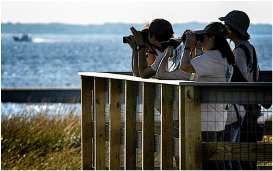
Nature Walks
Sandy Hook's waters, beaches, dunes and forests provide valuable migratory and breeding habitat for hundreds of species of birds and fish, as well as mammals, reptiles and amphibians. The Society exposes the public to Sandy Hook's wildlife through a variety of nature encounters, including walks and seining and fishing events. These are led by a team of experienced naturalists, including Fishtagging Program Director Emily McGukin and Assistant Director Lindsay McNamara. For more information check our upcoming events calendar.
Sandy Hook's waters, beaches, dunes and forests provide valuable migratory and breeding habitat for hundreds of species of birds and fish, as well as mammals, reptiles and amphibians. The Society exposes the public to Sandy Hook's wildlife through a variety of nature encounters, including walks and seining and fishing events. These are led by a team of experienced naturalists, including Fishtagging Program Director Emily McGukin and Assistant Director Lindsay McNamara. For more information check our upcoming events calendar.
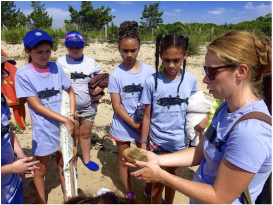
Educational Camps and Classes
Educating young people and introducing them to the coastal and ocean environments is one of the Society's priorities. Through a variety of programs, including Seaquest, a 12 week after school program for kids from under-served communities, and our summer and day camps, the Society brings kids not just to the water, but into the water where they don't just see, but can actually touch the marine life that lives there. For more information go to our education pages.
Educating young people and introducing them to the coastal and ocean environments is one of the Society's priorities. Through a variety of programs, including Seaquest, a 12 week after school program for kids from under-served communities, and our summer and day camps, the Society brings kids not just to the water, but into the water where they don't just see, but can actually touch the marine life that lives there. For more information go to our education pages.
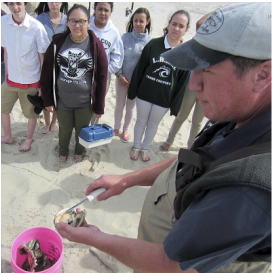
Fishing Clinics and Trips
In the spring and fall our Fishtagging Program runs surf fishing clinics at Sandy Hook and in the summer a fluke tagging boat trip. The clinics and tagging trip are for people of all ages and are designed to both introduce and reinforce the principles of saltwater fishing. For mor information go to our fishtagging page.
In the spring and fall our Fishtagging Program runs surf fishing clinics at Sandy Hook and in the summer a fluke tagging boat trip. The clinics and tagging trip are for people of all ages and are designed to both introduce and reinforce the principles of saltwater fishing. For mor information go to our fishtagging page.
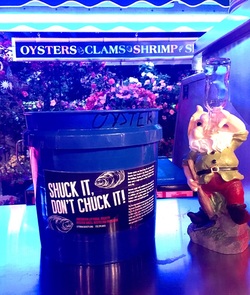
SHUCK IT, DON'T CHUCK IT OYSTER SHELL RECYCLING
Oysters extract lime from the water so they can grow their shell. This is why the Society recycles oyster shell from local restaurants. The shell is returned to the water where it provides a substrate for new oysters. The Shuck It, Don't Chuck It Oyster Shell Recycling Program is a win-win for oyster lovers, businesses and the bay's waters One oyster can clean up to fifty gallons of water per day. Oyster shell from restaurants ordinarily end up in landfills. Our program returns them to New Jersey's bays where they create a foundation for growing new oysters.
Oyster reefs also provide homes for other marine life and protect sensitive shorelines. Historically, they populated our coastal waters, but pollution, disease and overharvesting have destroyed these essential creatures of the marine ecosystem. Our program returns the shells to the bays for cleaner water, a healthier environment and more oysters on our plates.
Oysters extract lime from the water so they can grow their shell. This is why the Society recycles oyster shell from local restaurants. The shell is returned to the water where it provides a substrate for new oysters. The Shuck It, Don't Chuck It Oyster Shell Recycling Program is a win-win for oyster lovers, businesses and the bay's waters One oyster can clean up to fifty gallons of water per day. Oyster shell from restaurants ordinarily end up in landfills. Our program returns them to New Jersey's bays where they create a foundation for growing new oysters.
Oyster reefs also provide homes for other marine life and protect sensitive shorelines. Historically, they populated our coastal waters, but pollution, disease and overharvesting have destroyed these essential creatures of the marine ecosystem. Our program returns the shells to the bays for cleaner water, a healthier environment and more oysters on our plates.
|
18 Hartshorne Drive, Suite #1
Highlands, NJ 07732 732-291-0055 Executive Director: Tim Dillingham Finance Director: Lori Singer Interim Development Manager: Ryan Flood Fish Tagging Director: Emily McGukin Communications Manager: David Hawkins Habitat Restoration Program Director: Capt. Al Modjeski Habitat Restoration Manager: Zack Royle Habitat Restoration Coordinator: Julie Schumacher Education Coordinator: Audrey Litto |

